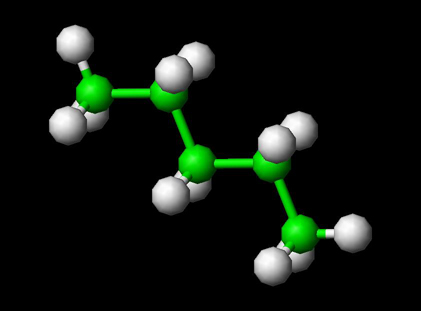Octane Molecule

To View the Octane Molecule in 3D --->>in 3D with Jsmol
Octane is an organic chemical, specifically an alkane, with formula C8H18. (8 carbon alkene). Octane has many isomers. One of those isomeres, the isooctane (2,2,4-trimetylpentane) is especially important, because its octane rating is by definition 100. So it is an important constituent of petrol (US:gasoline).
Octane ratings are ratings used to represent the anti-knock performance of petrol by giving the percentage of octane in an octane-heptane mixture that would have the same performance.
Octane as a Fuel
"Octane" is colloquially used as a short form of "octane rating" (an index of a fuel's ability to resist engine knock at high compression ratios, which is a characteristic of octane's branched-chain isomers, especially iso-octane), particularly in the expression "high octane."
The octane rating was originally determined by mixing a gasoline made entirely of heptane and 2,2,4-trimethylpentane (a highly branched octane), and assigning anti-knock ratings of 0 for pure heptane and 100 for pure 2,2,4-trimethylpentane. The anti-knock rating of this mixture would be the same as the percentage of 2,2,4-trimethylpentane in the mix. Modern octane ratings of gasoline are given octane ratings equal to those from this original heptane/octane scale. Different isomers of octane can contribute to a higher or lower octane rating. For example, n-octane (the straight chain of 8 carbon atoms with no branching) has a -10 (negative) octane rating, while pure 2,2,4-trimethylpentane (a highly branched octane) has an octane rating of 100.[1] Some fuels have an octane rating higher than 100, notably those containing methanol or ethanol.